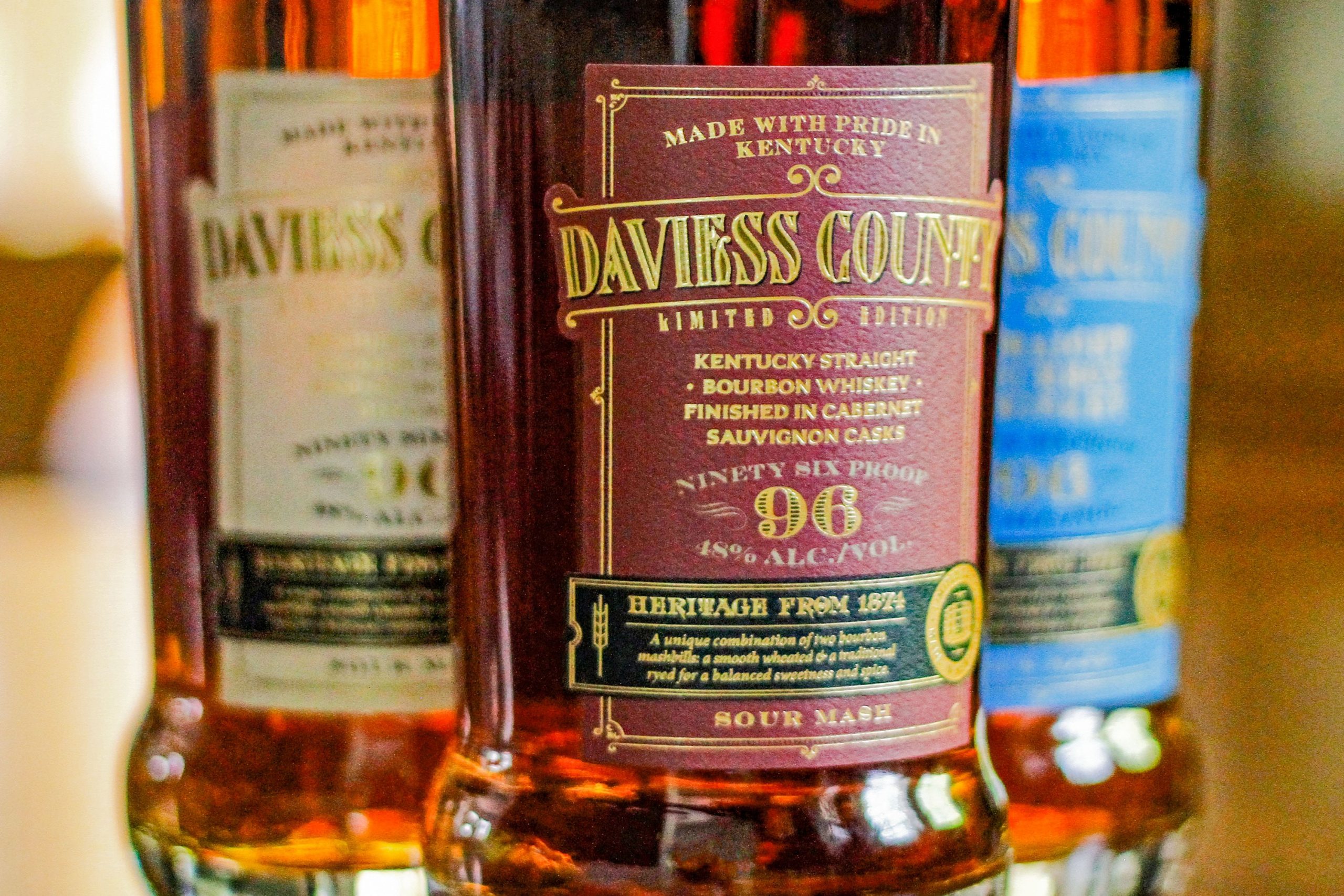If you know bourbon, then you know about proof. It’s the handy numerical code that tells you how strong the spirit is, printed on the label of every bottle of liquor.
Maybe you have a preferred proof: After buying a bottle or two, you look for the strength you like, and that’s all you need to know.
Or maybe it’s time to learn the whole story behind proof, and where exactly Daviess County fine bourbons fit.
Go USA
America is really the only country that uses the word “proof.” And even then, we only use it when referring to strong spirits that are all 40 percent alcohol or higher — think gin, vodka, rum, and yes, whiskey and bourbon.
Lighter offerings like wine and beer just go by percentage or “ABV” — alcohol by volume. And around the rest of the world, this is the term that’s used for all alcoholic beverages, regardless of how much alcohol the spirit contains.
By the numbers
Understanding proof requires a little multiplication and division.
Proof takes the percent of alcohol by volume in your spirit and doubles it. For example, if you know your spirit contains 50 percent alcohol, then you can double that to get 100 proof.
Conversely, if you know the proof, you divide it in half to find out how much alcohol that spirit contains.
Example: If the label on your bourbon says 100 proof, it contains 50 percent alcohol by volume. If it says 80 proof, it’s 40 percent alcohol by volume.
Best proof
On the low end are flavored whiskeys, which contain about 35 percent alcohol by volume, or 70 proof. These are more approachable and not so intense, with a greater focus on the flavors.
On the high end is Everclear, the famously strong spirit that comes in at 190 proof — meaning it has 95 percent alcohol by volume. (Hitting 100 percent alcohol is pretty much impossible.)
While bourbon must be 80 proof or higher, it typically runs between 80 and 100 proof. Some consider 100 proof to be the traditional benchmark of a spirit.
Daviess County’s bourbon offerings are all bottled at a classic 96 proof, or 48 percent alcohol by volume, giving them a serious presence while still allowing their nuanced flavors to shine through.
That includes:
* Daviess County Kentucky Straight Bourbon Whiskey, with its trademark combination of two bourbon mashbills, wheated and ryed
* Daviess County Cabernet Sauvignon Finish, which takes the Kentucky Straight Bourbon Whiskey and finishes it for six months in cabernet barrels from California’s Napa Valley
* Daviess County French Oak Finish, which takes the Kentucky Straight Bourbon Whiskey and finishes it for six months in French oak barrels
One last note: Barrel proof
When bourbon is placed into the barrel to age, it must not exceed 125 proof.
During the aging process, proof levels can vary from barrel to barrel, depending on where barrels are located in the rickhouse. Barrels on lower floors lose their alcoholic content and the proof declines; barrels placed higher become more alcoholic and their proof increases.
When the bourbon is ready to be bottled, distillers add water to fine-tune the taste, which lowers the proof.
These days, it’s become a trendy thing among bourbon fans to get bourbon straight from the barrel, at a higher proof. If a bottle is identified as “barrel-proof” or “cask-strength,” you can expect to see a higher percentage of alcohol and a much higher proof.








